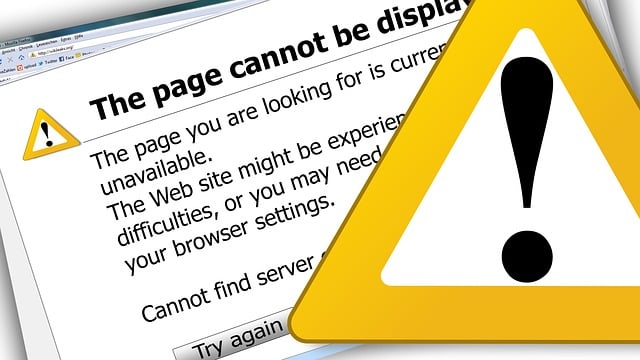Purchase Order (PO) financing can significantly aid businesses but comes with risks. To avoid common PO financing issues like term oversights, inaccurate demand forecasting, and supplier reliability problems, companies must implement careful planning and due diligence. This includes rigorous review of PO terms, accurate demand prediction, and supplier stability assessment. Meticulous documentation, internal controls, staff training, and technology automation are crucial to minimize errors, delays, disputes, and legal issues. By understanding and proactively avoiding mistakes like misinterpreted terms and inadequate vendor screening, businesses can navigate PO financing pitfalls, prevent costly blunders, ensure smooth operations, and maintain financial stability.
“Unleashing the power of purchase order (PO) financing can streamline business operations but beware—common errors lurk. This article guides you through the intricacies, revealing crucial insights on identifying and steering clear of PO financing mistakes. From understanding fundamental pitfalls to implementing risk-mitigation strategies, we equip you with the knowledge needed to navigate this complex process successfully.
Explore real-world case studies showcasing the consequences of PO blunders, offering valuable lessons to ensure your business avoids similar traps.”
- Understanding Purchase Order Financing and Its Common Pitfalls
- Identifying and Avoiding Mistakes in PO Financing Documents
- Strategies to Mitigate Risks and Ensure Accurate Funding
- Case Studies: Real-World Examples of PO Financing Blunders and Lessons Learned
Understanding Purchase Order Financing and Its Common Pitfalls

Purchase Order (PO) financing is a powerful tool that allows businesses to secure funding for purchases before the seller receives payment, streamlining cash flow and enabling smoother operations. However, like any financial process, it’s not without its potential pitfalls. Businesses must be vigilant to avoid mistakes in PO financing that could lead to delays, additional costs, or even legal issues. Common PO financing errors include oversights in contract terms, inaccurate forecasting of demand, and failure to consider supplier reliability.
Avoiding these blunders requires careful planning and due diligence. Businesses should thoroughly review PO terms, ensuring they align with their financial goals and risk tolerance. Accurate demand forecasting is crucial for avoiding over-financing or stockouts, while assessing supplier stability can prevent disruptions in the supply chain. By staying attuned to these details, companies can navigate PO financing more effectively, minimising errors and maximising its benefits.
Identifying and Avoiding Mistakes in PO Financing Documents

Identifying and Avoiding Mistakes in PO Financing Documents
When it comes to purchase order financing, one of the key aspects to ensure a smooth process is maintaining accurate and error-free documentation. Common PO financing mistakes can lead to delays, disputes, and even legal issues down the line. Some of the most frequent blunders include incorrect or missing information, such as product details, pricing discrepancies, and untidy formatting. Businesses should double-check every field in the PO financing documents to avoid these pitfalls.
To prevent PO financing errors, companies should establish a thorough review process before submission. This involves cross-referencing data across multiple sources, verifying signatures, and confirming that all terms align with the original purchase order. By being vigilant and meticulous in their approach, businesses can minimize risks associated with PO financing, fostering stronger relationships with both suppliers and financiers.
Strategies to Mitigate Risks and Ensure Accurate Funding

To mitigate risks and ensure accurate funding in purchase order (PO) financing, businesses should implement strategies that promote meticulous attention to detail. One effective approach is establishing robust internal controls, such as double-checking PO data against supplier information and verifying funds availability before finalizing the transaction. Regular staff training on PO processing procedures and an emphasis on continuous quality assurance can significantly reduce common mistakes like errors in pricing, quantity miscalculations, or missing terms and conditions.
Additionally, leveraging advanced technologies offers a layer of protection against PO financing blunders. Automated systems that streamline the entire process from creation to payment can catch mistakes early, ensuring accuracy and saving businesses time and money. Regularly reviewing and updating internal policies related to PO financing is also crucial, especially as market dynamics evolve and new risks emerge. Staying informed about industry best practices and consulting with financial experts can help businesses navigate PO financing pitfalls effectively.
Case Studies: Real-World Examples of PO Financing Blunders and Lessons Learned

In the fast-paced world of business, even minor lapses in purchasing can lead to significant financial setbacks. Case studies from real-world businesses highlight several common PO financing mistakes that have substantial implications. One prominent blunder involves misinterpreting purchase order (PO) terms and conditions, resulting in unexpected fees and delays. For instance, a tech startup once overlooked the importance of clearly defining payment schedules, leading to a strain on cash flow during peak production seasons.
Another PO financing pitfall is the lack of thorough vendor evaluation. A retail chain made the mistake of partnering with an unreliable supplier, causing disruptions in their supply chain and significant losses due to product quality issues. This underscores the critical need for meticulous vendor screening and ongoing performance monitoring. By learning from such blunders, businesses can navigate PO financing more strategically, avoiding costly mistakes and fostering healthier partnerships.






